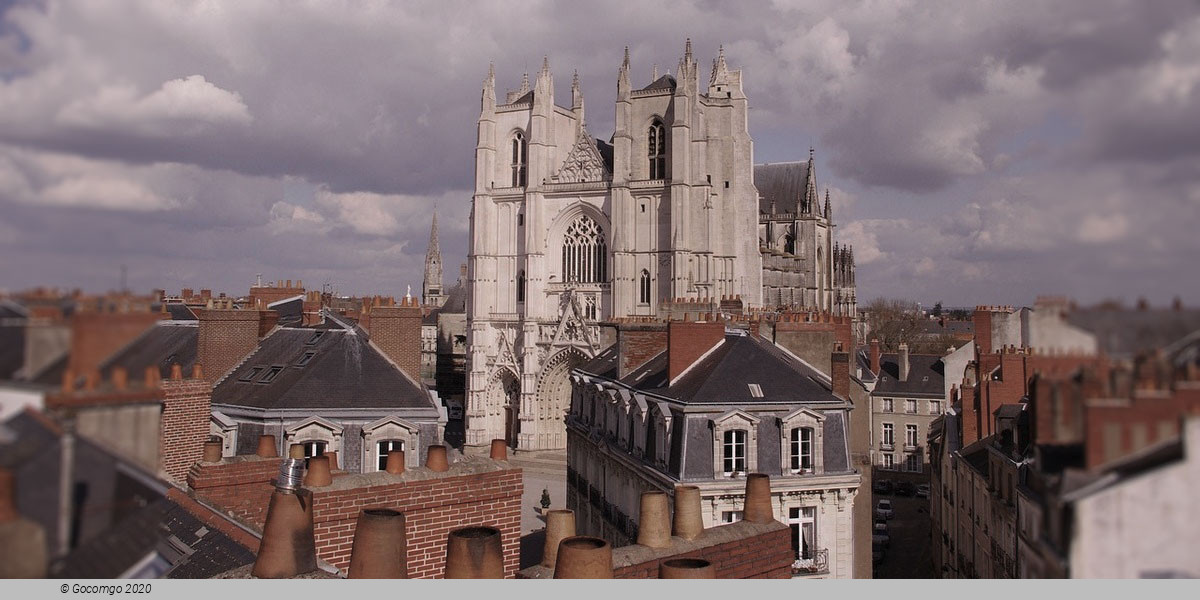Nantes

Nantes is a city in Loire-Atlantique on the Loire, 50 km (31 mi) from the Atlantic coast. The city is the sixth-largest in France. Nantes was identified during classical antiquity as a port on the Loire. It was the seat of a bishopric at the end of the Roman era before it was conquered by the Bretons in 851. Although Nantes was the primary residence of the 15th-century dukes of Brittany, Rennes became the provincial capital after the 1532 union of Brittany and France. During the 17th century, after the establishment of the French colonial empire, Nantes gradually became the largest port in France and was responsible for nearly half of the 18th-century French Atlantic slave trade. The French Revolution resulted in an economic decline, but Nantes developed robust industries after 1850 (chiefly in shipbuilding and food processing). Deindustrialisation in the second half of the 20th century spurred the city to adopt a service economy.
In 2012, the Globalization and World Cities Research Network ranked Nantes as a Gamma world city. It is the fourth-highest-ranking city in France, after Paris, Lyon and Marseille.
The Royal de Luxe street theatre company moved to Nantes in 1989, and has produced a number of shows in the city. The company is noted for its large marionettes (including a giraffe, the Little Giant and the Sultan's Elephant), and has also performed in Lisbon, Berlin, London and Santiago. Former Royal de Luxe machine designer François Delarozière created the Machines of the Isle of Nantes and its large walking elephant in 2007. The Machines sponsor theatre, dance, concerts, ice-sculpting shows and performances for children in the spring and fall and at Christmastime.
Estuaire contemporary-art exhibitions were held along the Loire estuary in 2007, 2009 and 2012. They left several permanent works of art in Nantes and inspired the Voyage à Nantes, a series of contemporary-art exhibitions across the city which has been held every summer since 2012. A route (a green line painted on the pavement) helps visitors make the voyage between the exhibitions and the city's major landmarks. Some works of art are permanent, and others are used for a summer. Permanent sculptures include Daniel Buren's Anneaux (a series of 18 rings along the Loire reminiscent of Atlantic slave trade shackles) and works by François Morellet and Dan Graham.
La Folle Journée (The Mad Day, an alternate title of Pierre Beaumarchais' play The Marriage of Figaro) is a classical music festival held each winter. The original one-day festival now lasts for five days. Its programme has a main theme (past themes have included exile, nature, Russia and Frédéric Chopin), mixing classics with lesser-known and -performed works. The concept has been exported to Bilbao, Tokyo and Warsaw, and the festival sold a record 154,000 tickets in 2015. The September Rendez-vous de l'Erdre couples a jazz festival with a pleasure-boating show on the Erdre, exposing the public to a musical genre considered elitist; all concerts are free. Annual attendance is about 150,000. The Three Continents Festival is an annual film festival dedicated to Asia, Africa and South America, with a Mongolfière d'or (Golden Hot-air Balloon) awarded to the best film. Nantes also hosts Univerciné (festivals dedicated to films in English, Italian, Russian and German) and a smaller Spanish film festival. The Scopitone festival is dedicated to digital art, and Utopiales is an international science fiction festival.

